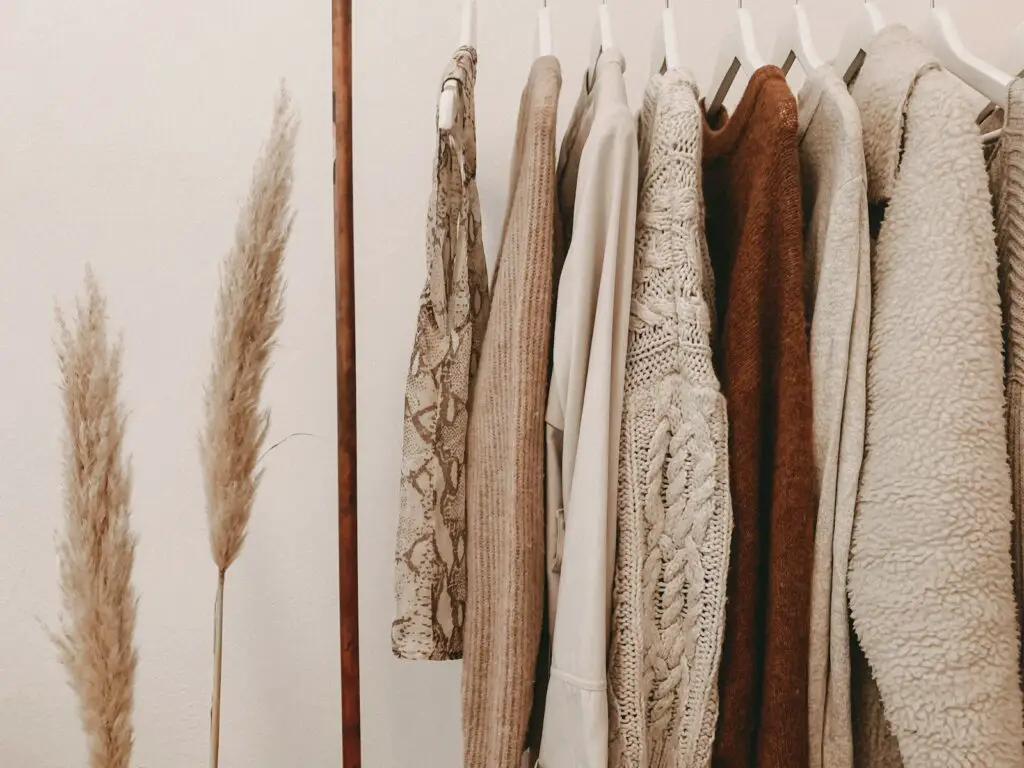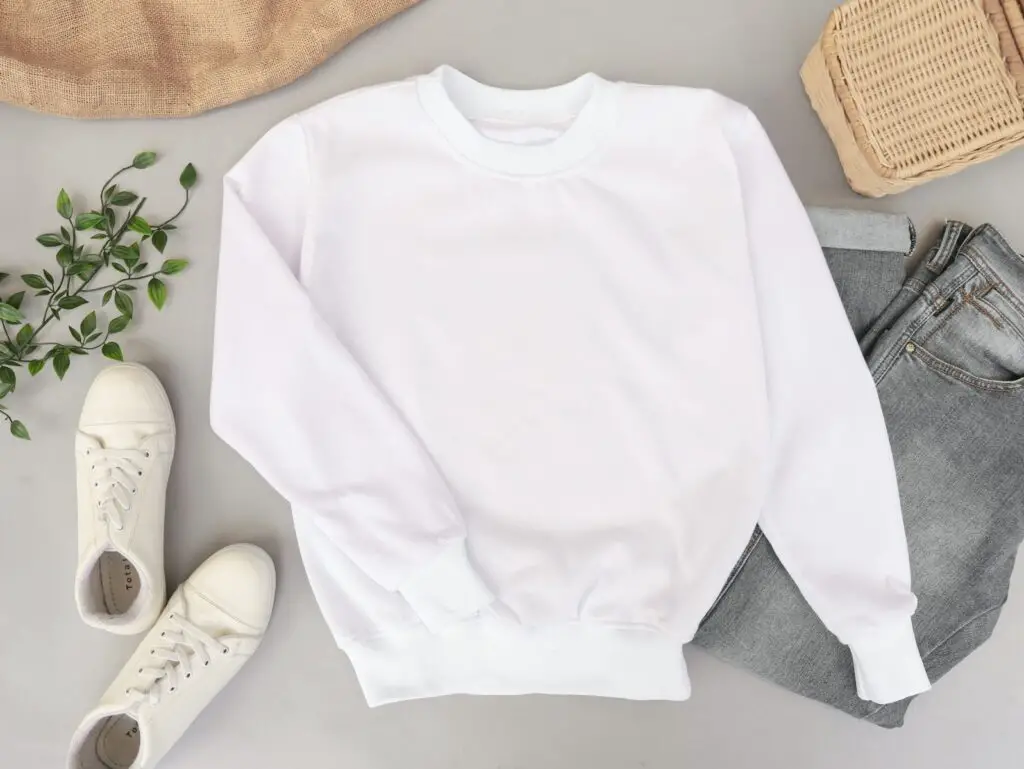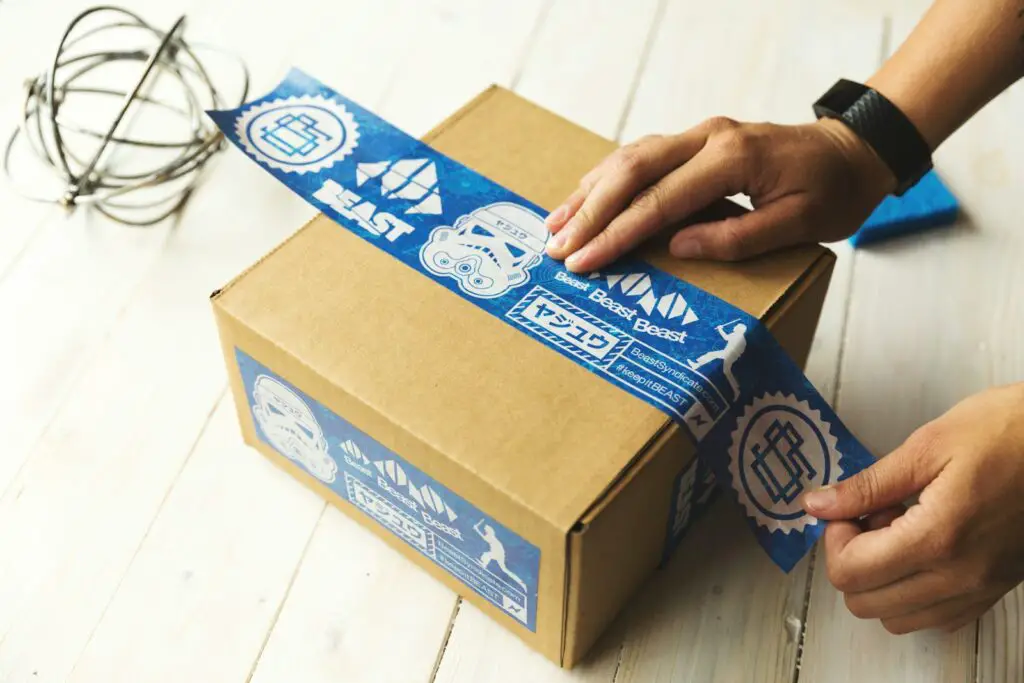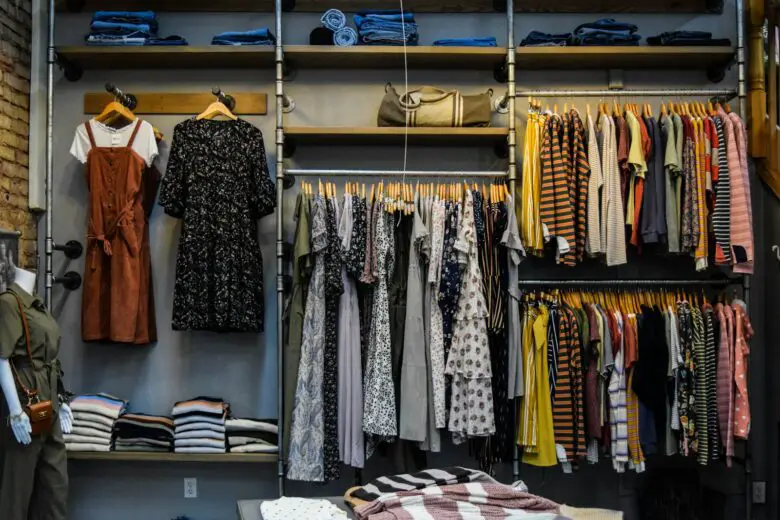Over 85% of textiles end up in landfills annually, but selling used clothes online offers a sustainable alternative that benefits both your wallet and the planet. This digital era has transformed closets into potential income streams, making it easier than ever to connect with buyers worldwide. Whether you’re decluttering or aiming for an eco-friendly lifestyle, understanding the best practices for selling pre-loved fashion can turn your wardrobe into a goldmine. Dive into the essentials of navigating the online marketplace, from capturing the perfect product photo to setting competitive prices, and start turning your once-loved garments into cash.
Choosing the Right Platform
Fees Analysis
Evaluating platform fees is crucial. Some sites take a high percentage of sales, while others offer more favorable terms. Look for an option that maximizes earnings without cutting too deeply into profits.
For instance, some top online marketplaces only charge when you make a sale. This can be a great option for sellers looking to keep costs low. However, it’s important to read the fine print. Some platforms may have hidden fees or charges for listing items.
Target Audience
Consider the style and target audience of your clothes. Niche platforms cater to specific styles or brands, potentially reaching a more engaged audience.
If selling vintage clothing, select a site known for such items. This strategy increases the likelihood of your clothes being seen by interested buyers. Conversely, general platforms offer a wide variety but may dilute visibility among a vast inventory.
User Feedback
Researching user reviews and platform traffic is essential. High traffic sites might seem appealing but check if users are happy with their selling experience.
Platforms with positive reviews and high user engagement often indicate a healthy marketplace. Sellers should prioritize these options to enhance their chances of successful sales.

Preparing Clothes for Sale
Clean Clothes
Before listing your used clothing for sale, ensuring they are clean is crucial. This step not only improves the appearance but also the value of the garments. Stains or odors can turn potential buyers away, making it harder to sell even the most sought-after items.
Washing and treating any stains on your clothes should be your first action. For delicate or designer clothes, consider professional cleaning to maintain their condition. Remember, presenting your items in the best possible light can significantly increase your chances of a successful sale.
Mend Garments
Inspect each piece of clothing for any damage or wear. Small repairs can make a big difference in how your items are perceived by buyers.
Sewing loose buttons or fixing minor tears might seem trivial, but these efforts show care and attention to detail. Buyers appreciate knowing that they’re purchasing well-maintained secondhand fashion. Plus, mending extends the life of clothing, contributing to sustainability.
Iron Clothes
Crisp and wrinkle-free clothes photograph better, making them more attractive to potential buyers. Taking time to iron or steam your garments before taking photos can set your listings apart from others.
This extra step ensures that the details and quality of the fabric are clearly visible. It helps create a professional look that boosts buyer confidence in purchasing from you.
Bundle Items
Grouping similar items or creating themed bundles can attract more interest and lead to quicker sales. Consider combining kids’ clothing by size or season, or putting together a vintage clothing lot.
Bundles offer buyers perceived value and convenience, often leading to higher overall sales for sellers. It’s an effective strategy for moving inventory faster and appealing to shoppers looking for deals.

Photography Tips for Listings
Natural Light
Use natural lighting to make your clothes look their best. Photos taken in natural light appear more vibrant and true to color. Avoid harsh shadows by shooting during the morning or late afternoon. This simple tip can significantly enhance the appeal of your listings on sites like Facebook Marketplace.
Avoid artificial light as it can alter colors and details. Natural light showcases the true quality of your items, potentially increasing the listing price.
Plain Background
A plain background ensures that nothing distracts from the item you’re selling. Choose a neutral-colored wall or a clean, uncluttered space. This makes your listings stand out and look professional across various sites.
Photos with busy backgrounds can detract from the item’s appeal. A plain backdrop highlights the clothes, making them the focal point of each listing.
Multiple Angles
Capture multiple angles and details of each piece. This gives buyers a comprehensive view, building trust in what you’re selling. Include close-ups of any unique features or defects to be transparent about the item’s condition.
Showcasing different angles helps buyers understand exactly what they are getting, reducing the chance of returns due to unmet expectations.
Size Reference
Including a size reference or mannequin demonstrates how the clothes fit. It provides a clearer idea of size and shape, which is crucial for online sales where buyers cannot try items on before purchasing.
This practice can reduce inquiries about sizing and increase buyer confidence in their purchase decisions, potentially leading to quicker sales.
Writing Compelling Descriptions
Clear Details
After capturing the perfect photos, crafting a compelling description is your next step. Start by providing clear and concise details about the item’s condition, size, and brand. This basic information lays the groundwork for trust and transparency with potential buyers.
Buyers value items that come with straightforward details. Mention any signs of wear or unique features upfront. It saves time and builds a positive community around your listings.
Engaging Stories
Beyond the basics, sharing the story behind a piece can significantly increase its appeal. Whether it was a dress worn to a special event or a vintage find from an exotic place, these descriptions add depth. They transform your listings from mere commodities to treasures with history.
This approach not only engages buyers but also helps your items stand out in crowded marketplaces. Use words that evoke images and emotions, making it easier for buyers to imagine owning the piece.
Search Optimization
Use keywords and phrases in your descriptions that potential buyers might search for. Think about what makes your item unique and how people might try to find such pieces online. Including these terms improves visibility and helps reach more interested buyers.
Remember, while quality photos attract attention, it’s the power of words that closes the deal. Invest effort into both for the best results.
Pricing Strategies for Used Clothes
Competitive Research
Researching similar items is key. It helps set competitive prices. Look at platforms like Uptown Cheapskate. See what others charge for similar clothes.
Prices should not be too high or too low. They must attract buyers while ensuring you profit.
Condition and Brand
Consider the original price, condition, and brand popularity. High-end brands can command higher prices, even if used. But, the item’s condition significantly affects its value.
Items in excellent condition can be priced closer to their original value. Those with signs of wear should have lower prices to reflect their condition.
Bundle Discounts
Offer discounts on bundles. This encourages buyers to purchase more items at once. It’s a win-win situation.
You clear out inventory faster while buyers feel they’re getting a better deal.
Quick Sale Offers
For items you want to sell quickly, consider a discount. A quick sale price can move items faster than usual.
This strategy works well for seasonal clothes or when you need to make room for new stock.
Safe Transaction Practices
Secure Payments
Use secure payment methods recommended by the platform. This ensures both buyer and seller protection. Payment processing typically involves a processing fee, but it’s a small price for security. Options like direct deposit into your bank account or platforms with built-in payment systems minimize risks. They often include a buyer protection fee or a flat transaction fee.
Avoid accepting cash for online sales. It’s safer to stick to digital transactions that can be tracked and verified.
Clear Communication
Communicate clearly with buyers within the platform. This helps avoid misunderstandings and scams. Always confirm payment receipt before shipping items. If a dispute arises, most platforms offer mediation based on your communication records.
Do not share personal information within messages. Keep conversations focused on the sale.
Meet Safely
For local exchanges, meet in public places. This adds an extra layer of safety for both parties involved. Confirm the meeting time and place through the platform’s messaging system.
Never invite strangers to your home or go to theirs for transactions.

Packaging and Shipping Best Practices
Eco Packaging
Eco-friendly packaging materials not only protect your clothes during shipping but also appeal to environmentally conscious buyers. They see this effort as a reflection of your brand’s values. Cardboard boxes or biodegradable mailers are great choices. They’re sturdy and minimize environmental impact.
Using these materials shows you care about the planet. This can turn first-time buyers into loyal customers.
Thank-You Notes
A personal touch can make a big difference. Include a thank-you note or a small gift in your package. This gesture encourages buyers to leave positive reviews. It reflects well on your customer service and can lead to repeat business.
Small gifts don’t have to be expensive. They just need to show appreciation for the buyer’s choice.
Reliable Shipping
Choosing reliable shipping services is crucial for a smooth transaction. Provide tracking information to buyers once you ship their package. This keeps them informed and builds trust in your service.
Opt for services that offer prepaid shipping labels. Prepaid labels simplify the process for you and ensure transparency in shipping costs for the buyer.
Maximizing Profits from Sales
Listing Updates
Regularly refreshing your listings can keep them at the forefront of prospective buyers’ minds. It’s crucial to update photos and descriptions to reflect the current state of your items. This approach ensures that your offerings remain competitive and appealing.
Buyers often have questions. Responding quickly can make the difference between a sale and a missed opportunity. Prompt replies show you’re reliable, boosting buyer confidence.
Social Promotion
Leveraging social media can significantly expand your reach. Platforms like Instagram, Facebook, and Pinterest allow you to showcase your items creatively. Sharing your listings through these channels can attract more eyes and potential buyers.
Don’t underestimate the power of word-of-mouth. Informing friends and family about your online store could lead to more sales. Personal networks often result in trusted transactions.
Profit Reinvestment
Once you start making sales, consider how to use that income wisely. Reinvesting profits into acquiring more inventory can grow your business. Alternatively, improving listing quality with better photos or descriptions may increase sales prices.
Investing in advertising on reseller platforms could also pay off by bringing your listings in front of more customers. Each sale brings store credit or income that can fuel future growth.

Top 19 Platforms to Transform Your Used Clothes Online into Cash
The rise of online platforms for selling used clothes reflects a growing interest in fashion sustainability and the circular economy. These platforms offer a variety of services to make selling used clothes online easy and accessible, catering to a wide range of styles from high-end to vintage. They provide a great opportunity for individuals to declutter, earn extra money, and promote garment recycling. Whether you’re experienced or new to selling used clothes, navigating these options can help you effectively reach buyers and contribute to a more sustainable fashion industry.
| Name | Type | Overview |
|---|---|---|
| Poshmark | Online | An online marketplace where you can sell designer clothing and accessories. It offers easy listing through its app and a social aspect where you can follow sellers and share listings. |
| ThredUP | Online | An online consignment and thrift store where you can send in your clothes for sale. ThredUP does the pricing and listing for you, but takes a significant portion of the sales. |
| eBay | Online | A global marketplace where you can sell almost anything, including used clothes. Offers auction-style and fixed-price listings, giving sellers flexibility. |
| Depop | Online | Targets a younger audience with a focus on vintage and unique clothing. The platform is app-based, emphasizing a social shopping experience. |
| The RealReal | Online | A luxury consignment store online. They accept high-end brands and provide professional photography for your listings to attract buyers. |
| Mercari | Online | A user-friendly app for selling not just clothes but a wide range of items. It’s known for its ease of listing and a flat 10% selling fee. |
| Buffalo Exchange | In Person | Physical stores located across the United States where you can sell or trade your clothes. Known for accepting trendy and in-season clothing. |
| Plato’s Closet | In Person | A chain of secondhand stores focusing on teen and young adult clothing. They offer immediate cash for items they accept. |
| Crossroads Trading | In Person | Offers both in-person selling at their stores and a mail-in service. Focuses on trendy, fashionable clothing. |
| Local Consignment Shops | In Person | Various local shops often accept used clothing for consignment. Terms and conditions vary greatly, so it’s worth checking out options in your area. |
| Facebook Marketplace | Online | A free platform where you can list items for sale to local buyers. Ideal for selling to people in your community. |
| Letgo (now part of OfferUp) | Online | A marketplace app for selling locally. Easy to list and communicate with buyers in your area. |
| Vinted | Online | Focuses on peer-to-peer sales of secondhand clothing. Offers a platform for users to sell, swap, or give away their clothes. |
| Tradesy | Online | Specializes in designer and high-quality women’s clothing and accessories. Offers shipping and return logistics support. |
| Grailed | Online | A marketplace dedicated to men’s clothing, focusing on designer and streetwear brands. Offers PayPal protections for buyers and sellers. |
| Online | While not a traditional marketplace, many sellers use Instagram to sell clothes by posting items and engaging with followers. | |
| ASOS Marketplace | Online | Hosts small boutiques and individual sellers who specialize in vintage and unique fashion. |
| Garage Sales | In Person | Hosting a garage sale can be a direct way to sell clothes locally, allowing you to set prices and negotiate in person. |
| Flea Markets | In Person | Renting a booth at a flea market can be an effective way to sell a large quantity of clothes to local shoppers. |
Summary
Selling used clothes online is a smart move, not just for clearing out your closet, but also for making some extra cash. You’ve got the tools now: choosing the right platform, prepping your clothes, snapping those eye-catching photos, crafting descriptions that sell, setting the right price, ensuring safe transactions, and getting your items shipped off efficiently. Each step is crucial for turning your once-loved garments into someone else’s treasure while keeping your profits up.
Remember, success in this game is all about strategy and execution. Keep refining your approach based on what sells and what doesn’t. Your next sale is just a well-crafted listing away. So, what are you waiting for? Dive in, apply these tips, and watch as your used clothes turn into cold hard cash. Let’s make those sales happen!
Frequently Asked Questions
What is the best platform to sell used clothes online?
Choosing the right platform depends on your target audience and the type of clothes you’re selling. Popular options include eBay for a wide audience, Poshmark for fashion-forward buyers, and Depop for vintage and unique items. Each has its own fees and audience type.
How should I prepare clothes before selling them online?
Ensure clothes are clean, well-ironed, and in good condition. Repair any minor damages to improve saleability. Presenting your clothes at their best will attract more buyers.
What are some photography tips for listing used clothes online?
Use natural light, take multiple angles, and showcase any unique details. Clear, high-quality images increase trust and interest from potential buyers.
How do I write compelling descriptions for my listings?
Keep it concise but informative. Include brand, size, material, condition, and any flaws. Highlight what makes the item special to entice buyers.
What pricing strategies should I use for used clothes?
Research similar items to gauge market prices. Consider the item’s condition, brand, and rarity. Pricing competitively while leaving room for negotiation can help secure sales.
How can I ensure transactions are safe when selling used clothes online?
Use reputable platforms that offer buyer and seller protection. Never share personal financial information and follow each platform’s guidelines for safe payments.
What are some packaging and shipping best practices for used clothes?
Use clean, secure packaging to protect the items during transit. Be transparent with shipping costs and times. Offering tracked shipping can reassure both you and the buyer.
How can I maximize profits from selling used clothes online?
Optimize listings with great photos and descriptions, price items smartly, offer bundle deals, keep an eye on trends, and maintain excellent customer service to encourage repeat business.















Leave a Reply